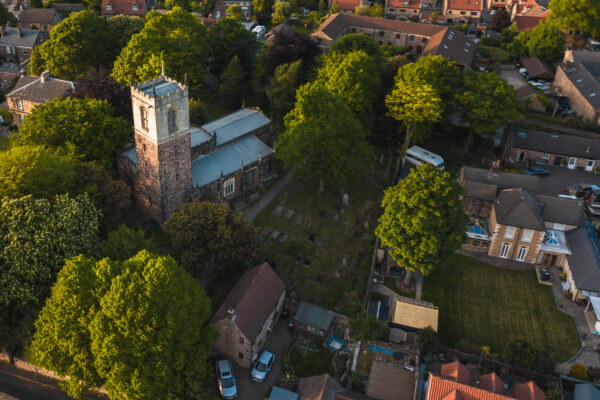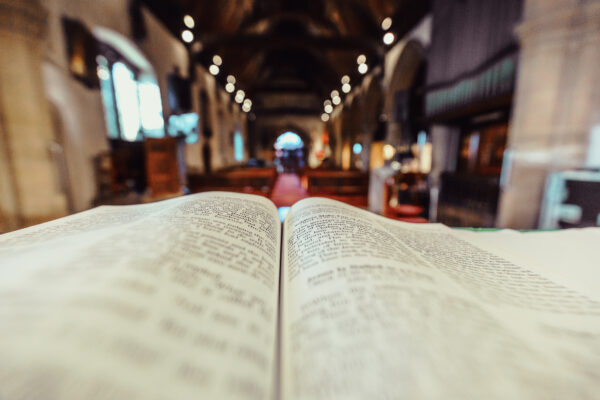Hattingen Witten
The Diocese of Sheffield’s link with the Church District of Hattingen Witten goes back to 1987. The partnership was ratified in 1990, and a year later in 1991 the Meissen Declaration was published. The Meissen Declaration commits the Church of England and the EKD (the Evangelical/Protestant Church in Germany) to “take all steps in steps to closer fellowship in as many areas of Christian life and witness as possible, so that our members may advance on the way to full visible unity.”
The link is about partnership, reconciliation, and friendship. Through our mutual visits, we deepen our understanding of Christian discipleship. By experiencing church in another context, we gain fresh insights on what it means to be church in our own situation.
Visits have taken place between Sheffield and Hattingen-Witten since 2016.
Read more about Hattingen Witten
Church District of Hattingen-Witten is our partner in Germany. It’s located in the Ruhr area, Germany’s industrial heartland. Hattingen and Witten are two medium sized towns, not far from Bochum, Sheffield’s twin town. The urban and cultural centres of Dortmund, Dusseldorf, Cologne and Essen are not far away. It’s a diverse and interesting area – and much greener than you might imagine.
The Church District forms part of the Protestant Church of Westphalia, and is made up of twenty-seven parishes. It’s a lively and varied church. It faces similar questions to our Diocese: how do we find fresh ways of communicating the gospel, while remaining faithful to our roots? How can we serve Christ in our neighbour? How can we be a confident and effective Christian presence in a secular, multi-faith society?
Argentina
This link is one of mutual support. For example, historically we have led an annual Theology Week in Argentina and a series on bereavement and ministry to the dying In turn, an Argentina team have led a mission at Clifton, Rotherham.
Parish links continue to play an important part in the good relationships between the two dioceses. Linked parishes include Ecclesall, Whiston, and Kimberworth Park.
About Argentina
This link is one of mutual support. For example, historically we have led an annual Theology Week in Argentina and a series on bereavement and ministry to the dying In turn, an Argentina team have led a mission at Clifton, Rotherham.
Parish links continue to play an important part in the good relationships between the two dioceses. Linked parishes include Ecclesall, Whiston, and Kimberworth Park.
Aims and Origins
Argentina is the world’s 8th largest country, stretching from the tropics to the seas around Antarctica. The Anglican Diocese of Argentina has nearly 30 times the population of the Diocese of Sheffield – and 1,500 times the area! It includes the vast fertile Pampas, windswept Patagonia, the snow-capped Andes, and tracts of desert and some sub-tropical jungle.
It is home to 45 million people, mainly of European descent but also Amerindian and, more recently, Asian origin. They are Spanish-speaking with over a third defined as living in poverty.
The largest denomination is Roman Catholic, though the Pentecostal and Charismatic churches are growing most rapidly.
Anglicans in Argentina
The British came to Argentina to build railways and other infrastructure and develop commerce and banking. Anglican chaplaincies opened in the main cities to provide church services in English for them. The Anglican cathedral in the capital, Buenos Aires, is South America’s oldest non-Catholic church.
The Anglican diocese still serves the decreasing number of Anglo-Argentines but it is now a Spanish-speaking church engaging with the wider community. It includes members from all sections of society and is committed to mission and service. Though small, it is a significant partner in the country’s network of Christian denominations, occupying a key position between Roman Catholics and Pentecostals.
Ministry in Argentina
The previous Bishop, Greg Venables, came to South America 43 years ago as a mission partner and previously served in Paraguay and Bolivia. But his successor, Brian Williams, was born and grew up in Buenos Aires. The majority of the clergy are now Argentines, including a new generation of young self-supporting ministers. They reflect the relative strength of ministry there amongst young people.
Most of the clergy are based in Buenos Aires, though Jony Bertin is minister in the city of Rosario, 200 miles away and Andy Walker at Mendoza at the foot of the Andes 700 miles from the capital. Congregations in and around the city of Córdoba in the heart of the country are served by clergy from Buenos Aires, 500 miles away,. Isolated congregations in Patagonia receive more
occasional visits. One of the challenges for the future is how areas far from the capital should feature in the life of the Anglican diocese.
Bondo
In 2019, Bishop Pete spent four days in Kenya seeking a potential formal partnership link between the Diocese of Sheffield and the Diocese of Bondo in Kenya.
Speaking at Diocesan Synod, he said how he had found African links very fruitful as we share similar time zones, school days and working days, and that there is a less of a language barrier.
The current Diocesan Bishop is The Rt. Rev. Prof. David H Kodia PhD. On 29 March 2021 Diocese of Bondo made history in this region by consecrating the first Lady Bishop the Rt. Rev. Dr. Emily Onyango as an Assistant Bishop in the Diocese.
The Region and Economy
Bondo is a town in Siaya County of Kenya. It has traditionally been a fishing town and its entire economy rotates around the fish from Lake Victoria. It the largest and most populous town of the county.
The Diocese
The Diocese of Bondo is one of the Dioceses in the Anglican province of Kenya and forms part of the world wide fellowship of Anglicans in the Anglican Communion. The Anglican Diocese of Bondo is a significant milestone and a pointer of the growth and development of the Anglican Mission in Kenya over the last 176 years.
At creation in 1999 Bondo Diocese had 19 parishes. Currently the Diocese has 51 parishes. A number of these are one congregation parishes while others range from two to seven congregations within a parish.


